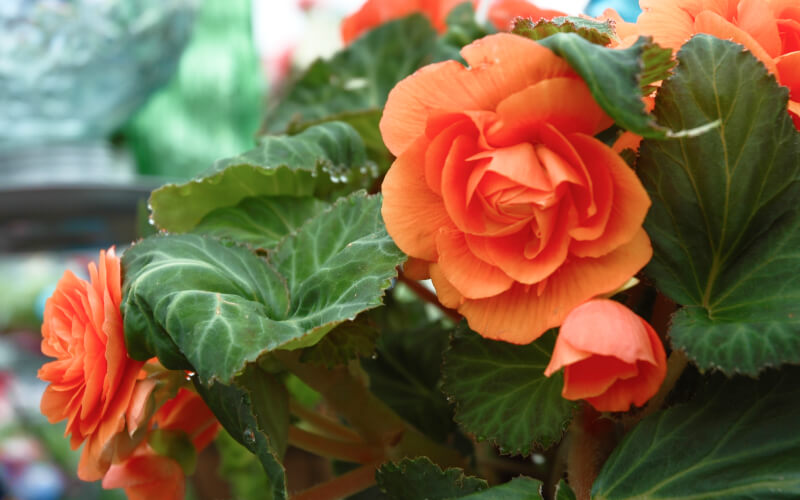
Tuberous begonias have beautiful blooms that sit on waxy stems and come in a wide array of colors such as bright yellow, blush, and true red and in a variety of forms. They are often grown as annuals, however, they may also be kept as perennials in more moderate climates. Grow them as bedding plants, or in window boxes, hanging baskets, and other containers for a pop of color throughout the summer months.
Tuberous Begonia Plant Information
Growth Habits of Tuberous Begonias
Upright begonias
The upright form of the tuberous begonia features large, saucer-like blooms on upright stems. Plant in garden beds, and other containers for a pop of color during the summer.
Cascading begonias
Cascading, or trailing, begonias feature many blooms on weeping stems. Use them in hanging baskets or window boxes for a beautiful, full effect and lasting color.
Related How many begonia tubers should I plant in my hanging basket?
Flower appearance
Tuberous begonias have a variety of flower forms, differing both in the number of petals and the petal appearance itself. Many-petaled varieties will produce both double (male) and single (female) blooms. Single-petaled varieties also produce both male and female flowers, although their difference is not as obvious.
How to Grow Tuberous Begonias
Although you can start begonias from seed, they’re most commonly grown from tubers or from plant starts found at the nursery.
From tuber
To grow begonias from tubers, fill a container with well-draining soil and place the tubers 1 in. (2.54 cm.) deep, concave side up. Place outside after danger of frost has passed or in a warm area of your home that receives indirect light. Soil temperature must reach about 70°F (21°C) for buds to appear, usually within a few weeks.
Related How to figure out your last frost date
Caring for Tuberous Begonias
Light Requirements
Tuberous begonias grow best in areas of partial shade to partial sun. Keep them in an area of your garden or patio that will receive plenty of bright light throughout the day while avoiding areas that receive the full rays of the sun.
Water Requirements
To know when to water tuberous begonias, use the “knuckle test,” to test for when the top 1/2 in. (1.27 cm.) of soil is dry. Water deeply and allow the excess water to drain.
Tuberous begonias do not like to be over- or under-watered so watch for hints that something is amiss. Wilting, droopy, or curling leaves and stems; browning leaf tips; and darkening stems near the base of the plant can all be signs that you need to adjust your watering schedule.
